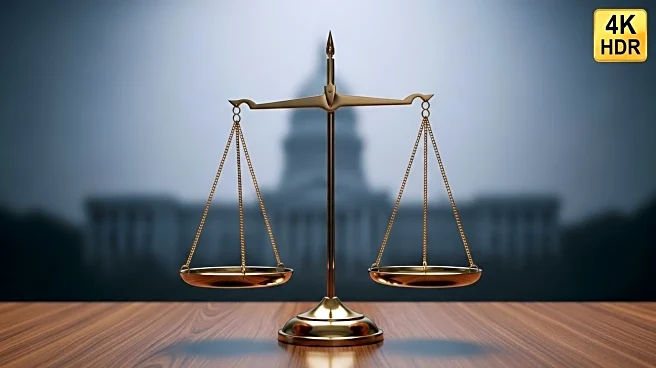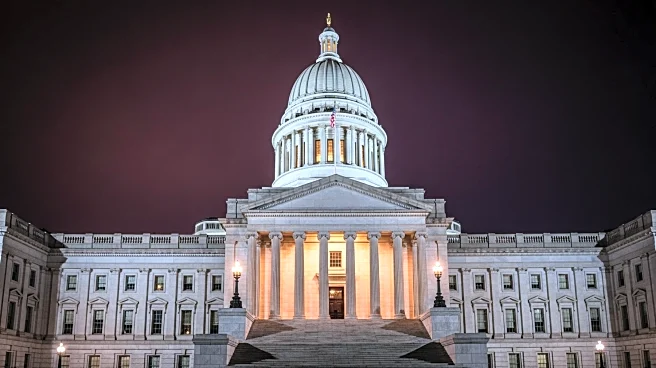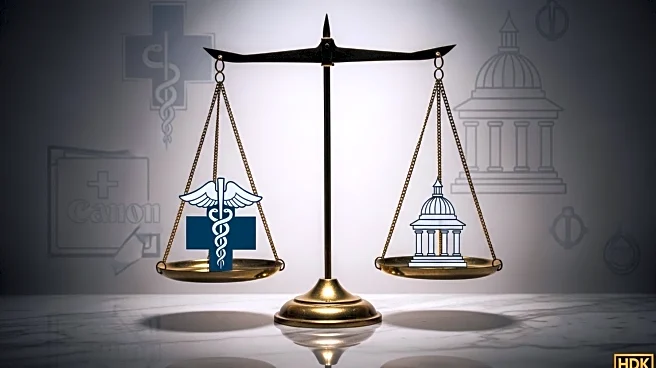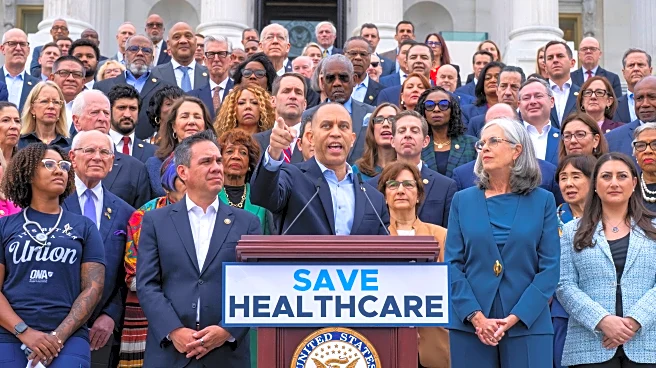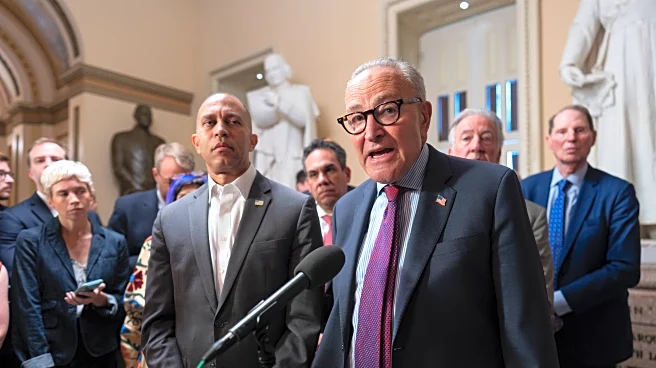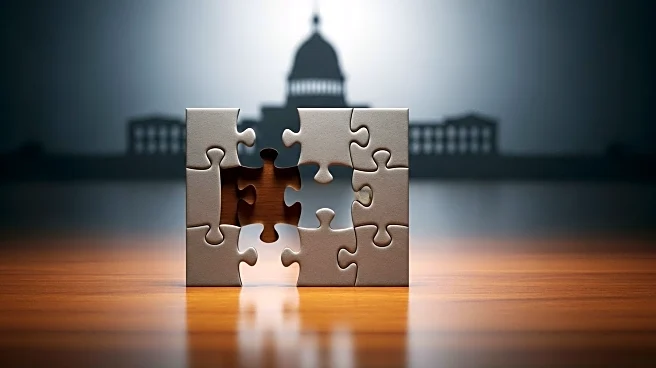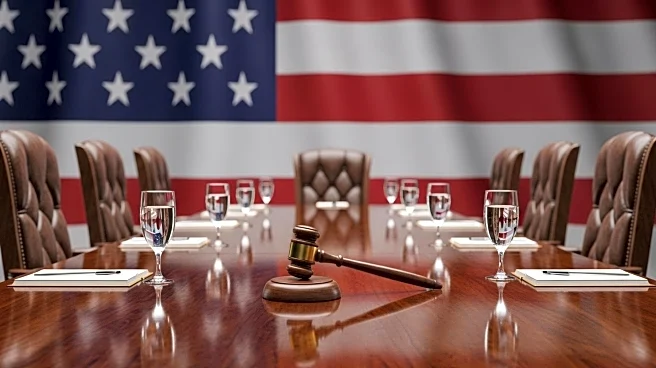What's Happening?
The U.S. government has entered a partial shutdown after Senate Democrats largely voted against a short-term funding bill. The measure, which required five more votes to pass, was supported by Senate Republicans and President Trump. The shutdown affects non-essential government operations, with federal employees facing furloughs or working without pay. The bill aimed to maintain funding levels until November 21 but was blocked due to Democratic demands for provisions such as pandemic-era health care subsidies and foreign aid funding. Senate Majority Leader John Thune expressed hope for a resolution, indicating plans to reattempt the vote.
Why It's Important?
The shutdown has significant implications for federal operations and employees, with potential disruptions to public services and programs. Essential services like Social Security and Medicare will continue, but others, including FEMA and TSA, may face delays. The political standoff highlights ongoing tensions between Republicans and Democrats over budget priorities, with Democrats seeking additional provisions in the funding bill. The shutdown could impact public perception of both parties, with a majority of voters opposing the shutdown according to recent polls. The situation underscores the challenges in reaching bipartisan agreements on fiscal matters.
What's Next?
Senate Republicans plan to revisit the vote, hoping to secure enough Democratic support to pass the funding bill and end the shutdown. The White House has indicated potential irreversible actions during the shutdown, such as federal employee layoffs. Political leaders may face increased pressure from constituents and stakeholders to resolve the impasse. The shutdown's duration remains uncertain, contingent on negotiations and potential concessions from both parties. The situation may lead to further political maneuvering as leaders seek to balance fiscal responsibility with public service continuity.



